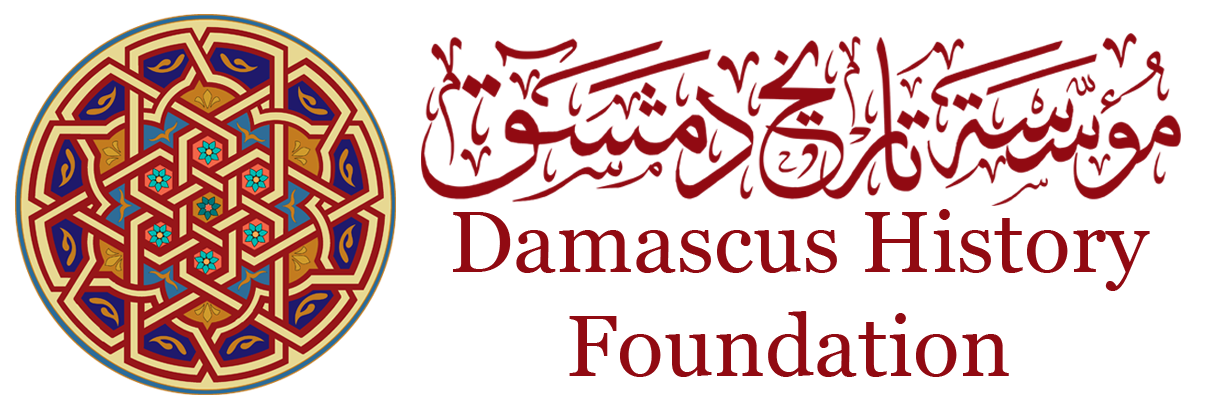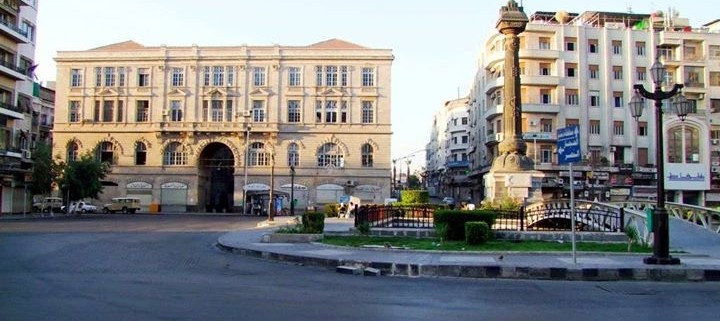Walking With History in Damascus
Mark Twain remarked in Innocents Abroad, “Go back as far as you will into the vague past, there was always a Damascus.” Although, in my experience there is no need for going back to ancient history; rather walking in Damascus reveals how the city effortlessly moved from one epoch to the next. In Damascus the different time periods are etched in the cityscape and are easily missed when driving and the streets become a blur. However, walking in Damascus is a challenge as cars take over the roads and even the sidewalks. Nonetheless, I have gotten to know Damascus, old and new, from walking, which at times was challenging but it was the only way for me to explore and appreciate the city in all of its idiosyncrasies.
Perhaps what I miss most about Damascus are the different walks I took and where I plotted each itinerary to maximize the impact of the city. It seemed every building had a story to tell which made sense since most of the important people in Arab and Islamic history are buried there or at least lived there at some point. The early and medieval Arab-Islamic history one reads in books is written in the cityscape. Hence, many of my walks were historical in nature. My favorite was the one that took me from the French Mandate and early Syrian independence period to the Old City, parts of which dated back to the Aramaeans. I started at the intersection of the two neighborhoods Abu Rummaneh and Sha’lan and where IFPO, the French institute for Near Eastern studies, was located and walked back to Haret Hanania where I lived in the Old City. While I could have grabbed a taxi or service to Bab Tuma, I preferred to walk. Not only was it faster in the mid-day traffic that ensnarled the streets of Damascus and where the boulevards become one large parking lot with the smell of exhaust fumes and sound of horns dulled the senses, but it reminded me of how fortunate I was to be in Damascus and I did not want to miss the beat of the city sitting in a taxi nursing a headache. But it also reminded me I was not from the city, because walking was not what many residents did, if they could drive or afford the taxi fare. Cars ruled the streets of Damascus and forced pedestrians to zigzag between the asphalt and sidewalk. Cars parked everywhere and on the sidewalks they were so packed as to discourage but the most determined walker. At the time, I was frustrated by how inhospitable the city was to walkers when it was generous in so many other ways. But I discovered the best time to walk in Damascus was during the early afternoon lull. There were also fewer cars during the World Cup final but that only came once every four years.
From IFPO I went towards Sahat al-Nijmeh making my way to the Sham Hotel. I sometimes stopped to check the latest books in Nobel Library across the street from the hotel before making my way to Bahsa after crossing Sahat Yousef al-Azmeh. I continued pass the Iranian Cultural Center before I took the street that led me to the late Ottoman period and to Marjeh Square and on to the entrance of Suq Hamidiyya. I do not remember names of the streets I walked but I took my directions from the buildings that lined the streets. I also looked for the cast of regulars that stood or sat in front of their stores. Crossing to Suq Hamidiyya was always a challenge and much easier to do before the barricades went up and the pedestrian tunnels were dug. Suq Hamidiyya was my first entrance to the Old City and remains
my favorite. For some reason, it was one of the few places in the world where I did not mind the crowds.
My favorite part of this walk was the path that led from the front to the back steps of the Omayyad Mosque through Qimarriyyah Alley until the dead ended. Here is where the Roman, Byzantine, and early Islamic all overlap. Over the years I watched the transformations of Qimarriyyah as it became more touristy. I saw barbershops, groceries, small workshops convert into the standard souvenir and rug stores. There was the fatteh restaurant that opened in cold weather when the owners closed their lemonade ice stand but that too disappeared when it was taken over by an investor to convert into some or other tourist related project. I did notice over the years that the street got cleaner and better lit. When I reached the ruins at the end of Qimarriyyah alley, which were rebuilt and turned into a hotel, I made a left towards Bab Tuma.
There were many ways from Bab Tuma to Haret Hanania and I explored them all. I preferred the narrowest alleys where cars could not drive. The streets became narrower as I got closer to my residence in the Old City and pedestrians ruled!
I always walked back to the Old City and rarely from the Old City to IFPO. In the morning it was quicker to take the bus from Bab Tuma that would deposit me in Sahat Nijmeh a few steps from IFPO soon after it opened. But after several hours in the library I needed the walk to shake off the stupor of reading and be in the city I was researching.
Damascus is about continuity and although I have not been to Damascus for several years, I still repeat my steps from IFPO to the Old City as my mantra for my own return to the city.



